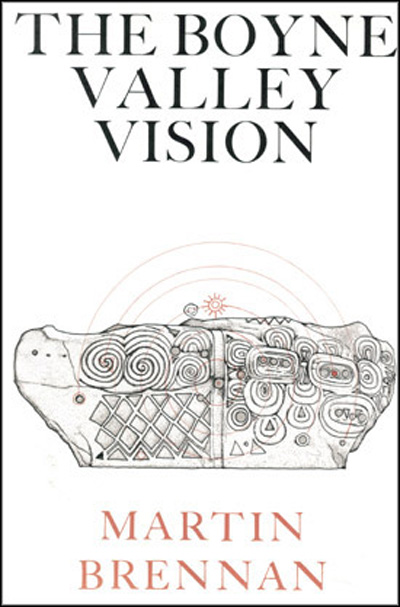Newgrange Ancient Observatory
An article printed in The Irish Times 8 February 1980A Theory that the ancient edifice at Newgrange, Co. Meath, was built as an astronomical observatory, and not as a burial ground, through it was later used as such, was advanced in Mullingar, Co. Westmeath, last night by Mr Martin Brennan, an Irish American, who has been studying the site for some time. In a lecture entitled "Decoding Newgrange" delivered to the Mullingar Archaeological and Historical Society, Mr Brennan said that a scientific visual design analysis of Boyne Valley rock inscriptions showed that intensive sundialling had been practiced there.
"The sundialling techniques are scientific, in nature, and highly advanced. Dials have been recognised which give data on how they divided the day. These are the oldest sundials in the world, pre dating any previously known dials by thousands of years." Mr Brennan, who has been working as a graphics designer in Dublin for the past 10 years, said that this type of dialling led to dialling on a large scale.
"Newgrange, as a scientific instrument, he said, recorded, not only the solar year, but an even larger cycle of time, which was astronomically based. The appearance of the rays of the full moon every 19 years at Newgrange measures this cycle period. Asked of he could put a date on the sundials, he said they dated back to at least 3,200 BC "a neat 2,000 years older" than the Egyptian sundials, dated 1,200 BC. Mr Brennan said the inscriptions included a calendar, which was fully worked out, and solved all the basic problems of calendar making. " The calendar is extremely sophisticated and advanced as both an astronomical tool and a visual computer. It is the oldest computing device known to man."
Fully understood
The inscriptions, he claimed formed a system of intercommunication which was ordered logical and meaningful, and which could now be fully understood. There was a canon of measurements there in use, which were clearly and explicitly stated, and geometrically related, he added.The Boyne Valley Vision
 The Boyne Valley Vision
by Martin Brennan. Published by The Dolmen Press in 1980.
The Boyne Valley Vision
by Martin Brennan. Published by The Dolmen Press in 1980.
In this book Martin Brennan presents an entirely new interpretation of these monuments, one which challenges the conclusions of earlier studies and offers conclusive evidence which radically changes our knowledge of megalithic culture in Ireland. The Boyne Valley Vision is a personal step-by-step account of a quest that has resulted in some of the most astounding and profound archaeological decipherments of our time.
Martin Brennan demonstrates in his text and in some ninety drawings and figures from his pen the vision of the universe transmitted by the artists of megalithic Ireland in their designs carved in naked rock. He shows that the ideas expressed by these artists are more substantial than the stones on which they are incised. His study exposes for the first time an entire cosmology, a vocabulary of symbols, the sundials, the calendar and other scientific tools of the oldest culture known to us.
Purchase at Amazon.com or Amazon.co.uk
Boyne Valley Private Day Tour
 Immerse yourself in the rich heritage and culture of the Boyne Valley with our full-day private tours.
Visit Newgrange World Heritage site, explore the Hill of Slane, where Saint Patrick famously lit the Paschal fire.
Discover the Hill of Tara, the ancient seat of power for the High Kings of Ireland.
Book Now
Immerse yourself in the rich heritage and culture of the Boyne Valley with our full-day private tours.
Visit Newgrange World Heritage site, explore the Hill of Slane, where Saint Patrick famously lit the Paschal fire.
Discover the Hill of Tara, the ancient seat of power for the High Kings of Ireland.
Book Now
Home
| Visitor Centre
| Tours
| Winter Solstice
| Solstice Lottery
| Images
| Local Area
| News
| Knowth
| Dowth
| Articles
| Art
| Books
| Directions
| Accommodation
| Contact

